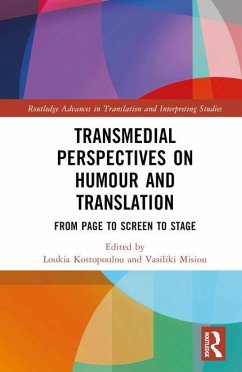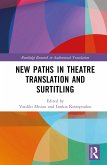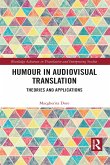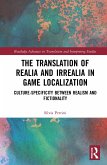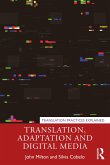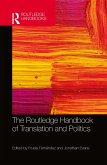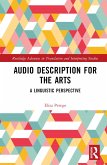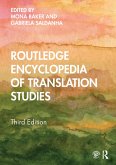This innovative collection spotlights the role of media crossovers in humour translation and how the latter is conveyed through new means of communication.
The volume offers an in-depth exploration of the entanglements of film, theatre, literature, TV, the Internet, etc., within the framework of transmediality and their influence on the practice of translating humour. Chapters focus on the complex web of interrelationships shaped by and shaping the process(es) of transformation and adaptation that take place across media and across languages and cultures. Situating translation practices and innovations within an interdisciplinary context, the volume underscores the hybrid nature and complex semiotics of humour and the plurality of possibilities for new insights that contemporary approaches offer driven by technological advancements in the industry.
The book will be of particular interest to scholars and researchers in the fields of Translation Studies, Humour Studies, Audiovisual Translation, Media Studies, and Adaptation Studies.
The volume offers an in-depth exploration of the entanglements of film, theatre, literature, TV, the Internet, etc., within the framework of transmediality and their influence on the practice of translating humour. Chapters focus on the complex web of interrelationships shaped by and shaping the process(es) of transformation and adaptation that take place across media and across languages and cultures. Situating translation practices and innovations within an interdisciplinary context, the volume underscores the hybrid nature and complex semiotics of humour and the plurality of possibilities for new insights that contemporary approaches offer driven by technological advancements in the industry.
The book will be of particular interest to scholars and researchers in the fields of Translation Studies, Humour Studies, Audiovisual Translation, Media Studies, and Adaptation Studies.
"This volume makes stimulating inroads into the complex world of humour across lingual, modal and medial borders. In 11 chapters emerging and established scholars explore a wide range of humouristic phenomena and their translation across various media - from book, stage to film and TV and internet. In doing so, they broaden the view from a purely linguistic perspective to a transmedial one, bringing translation studies into dialogue with a range of other disciplines. It is a great merit of this carefully and masterfully edited volume that humour is taken seriously and that one still has fun reading it. In this sense, this volume is an essential textbook for readers across disciplines who are interested in the many forms of transmedial humour translation."
- Klaus Kaindl, University of Vienna
- Klaus Kaindl, University of Vienna
